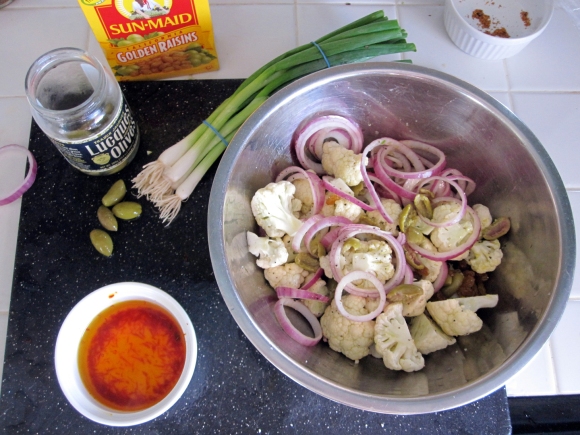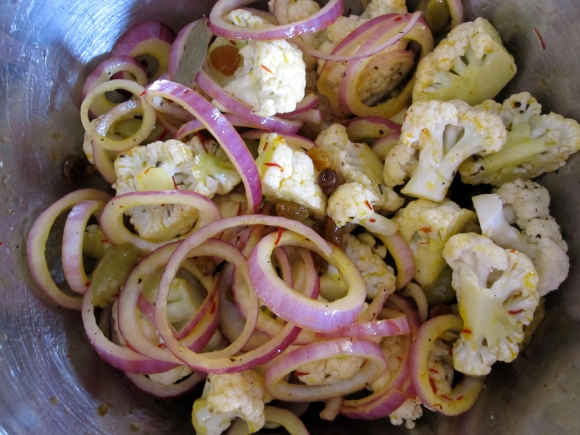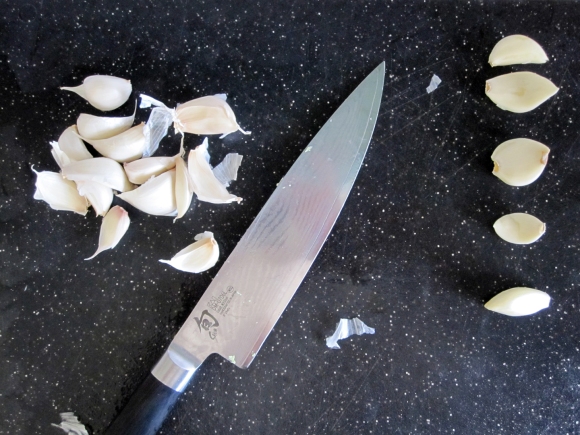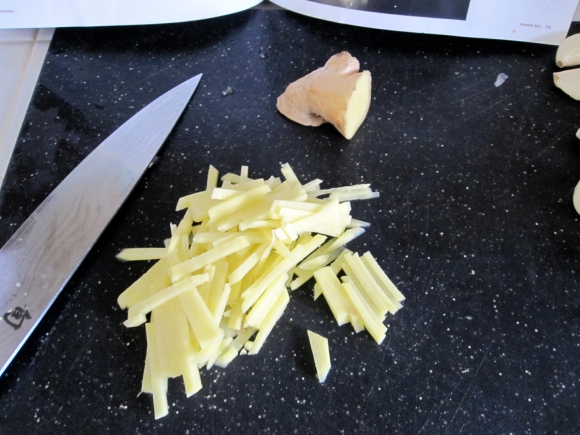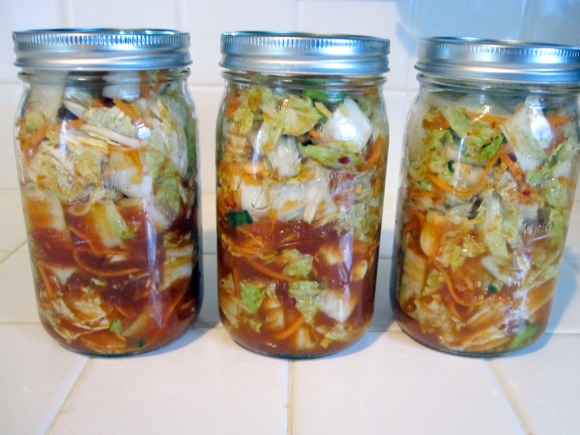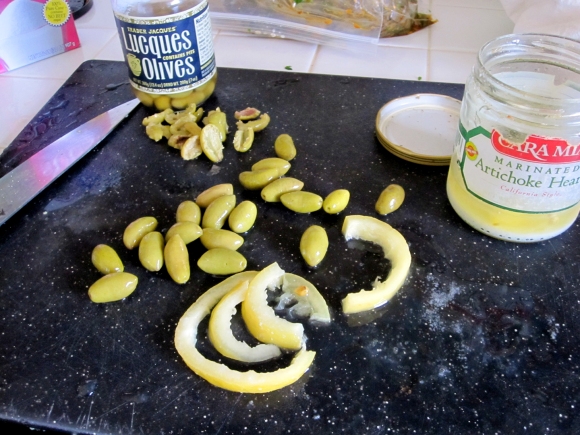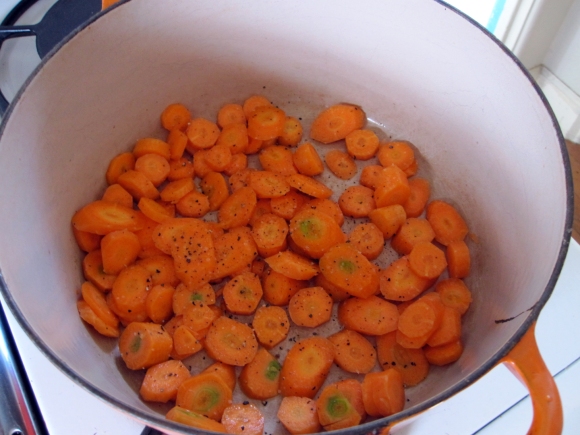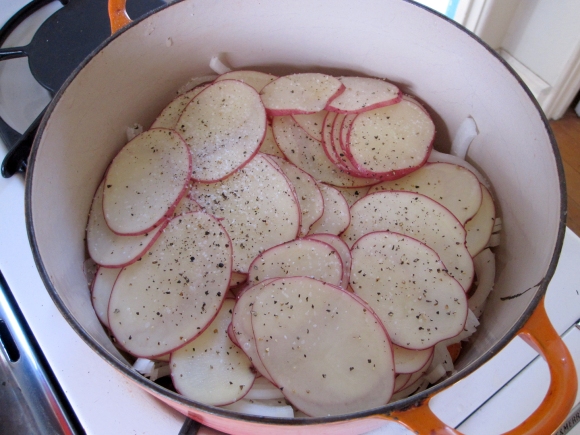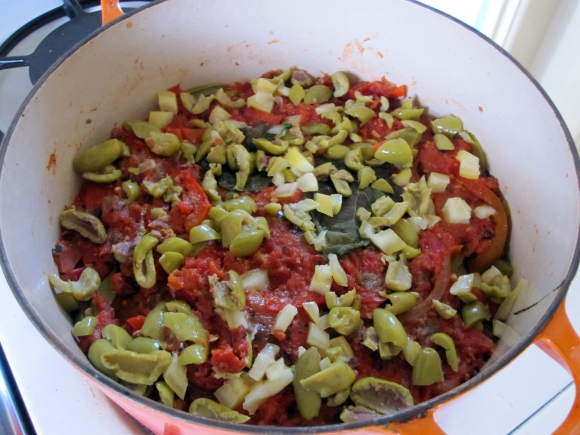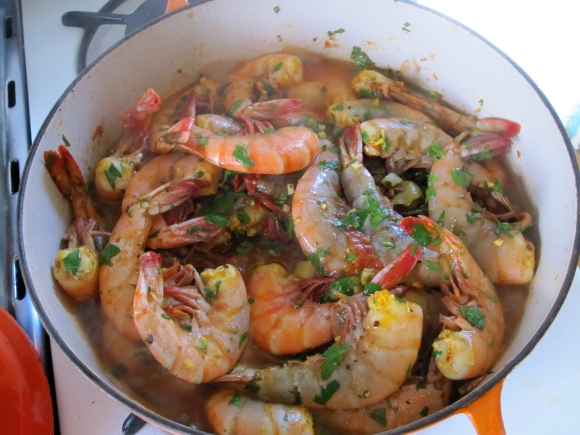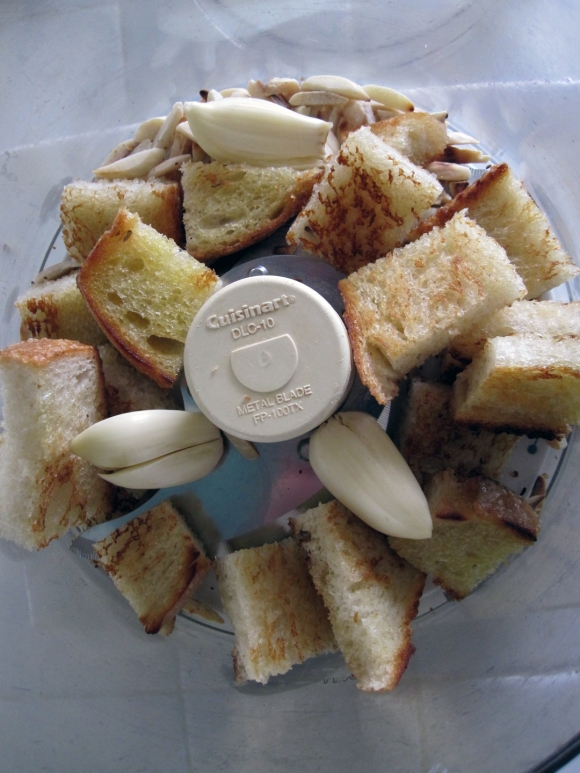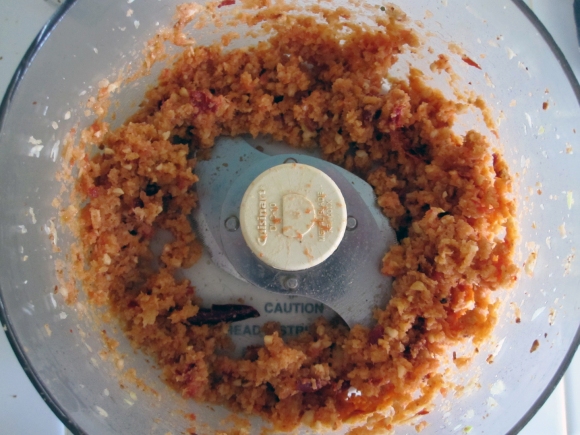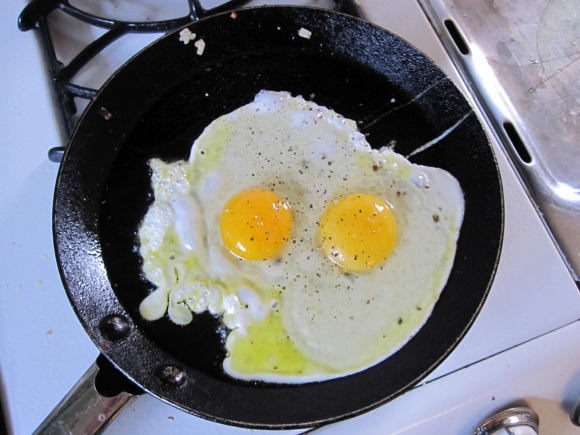So, this is a double-header from Yotam Ottolenghi’s Plenty.
We got the book a few days ago from Amazon, after making his Black Pepper Tofu a couple of times and falling down dead from it. Ottolenghi’s true gift is a flawless and astounding sense of flavor. He’s using the same stuff we all are, good veggies, standard spices, an oven and a frying pan, but his food doesn’t taste like anyone else’s. Every bite is a prayer to the gods of taste and goodness.
The other night the Woman on the Verge made his lentils with tomatoes and gorgonzola. It was, well, it was fucking amazing.
The oven dried tomatoes were a revelation and something I am going to steal for many, many meals in the future. Just quarter your tomatoes, drizzle with olive oil and sprinkle with thyme, and roast in a low 275 oven for an hour and a half. It turns them into a kind of cross between sun-dried and fresh, reminiscent of pizza almost, but vibrant and fresh and rich and mellow and oh my god. And I am not a big tomato fan. These are going into any dish I can shoe-horn them into from now on.
*
So, last night we’d both been busy all day. We decided to split the cooking and each do something from Plenty. Yolie made the sweet potato cakes and I took a run at the Saffron Cauliflower.
Here’s what you need:
Sweet Potato Cakes
Barely adapted from Yotam Ottolenghi’s Plenty
Serves 4
2 ¼ pounds peeled sweet potatoes, cut into large chunks
3 teaspoons soy sauce
¾ cup flour
1 teaspoon sea salt
½ teaspoon white sugar
3 tablespoons thinly sliced green onion
½ chipotle peeper, chopped, including the seeds if you want a bit of heat
Unsalted butter for frying
1. Steam the sweet potato chunks until completely tender, about 30 minutes, tossing occasionally. Let the potatoes drain, uncovered, until most of the liquid is gone, about an hour.
2. Toss the drained sweet potatoes with the remaining ingredients until completely combined and the potatoes have been mashed. Be careful not to over mix, to ensure that the cakes aren’t tough. The mixture should be sticky, if it is too much so, add a bit more flour.
3. Melt one tablespoon of butter in a cast iron skillet or non-stick frying pan. For each cake, take a tablespoon of the mixture and plop into the pan, flattening into a cake with the back of the spoon until the cakes are about 2 inches in diameter and less than a half inch thick. Brown each side of the cake, about 4-5 minutes per side. Pop the fried cakes into a warm oven to keep until serving. Add a bit of butter to the pan for each round of cakes. The potato mixture will keep, uncooked, in the refrigerator for a couple hours between frying. Serve the cakes hot, with the accompanying sauce.
Sauce
3 tablespoons Greek yogurt
3 tablespoons sour cream
1 tablespoons olive oil
Juice from half a lemon
2 tablespoons chopped cilantro
Salt and black pepper to taste
*
Amazingly good. Enough said.
*
Saffron Cauliflower
One medium cauliflower, chopped into florets
One medium red onion, sliced into rounds
1 tsp saffron threads
1/3 cup boiling water
2/3 cup golden raisins
1/2 cup good green olives, pitted and halved
3 tbs olive oil
2 bay leaves
handful chopped parsley or cilantro
salt and pepper
*
Preheat your oven to 400. Place the saffron threads into a small bowl and pour the boiling water over them. Allow them to steep for a minute or two while you mix all the other ingredients except the parsley or cilantro into a large bowl. Add the saffron threads and water and mix well with your hands. Place the mixture into an oven safe dish and cover with foil. Bake for fifty minutes, stirring once halfway through, until cauliflower is soft and everything is redolent with the scent of saffron.
Serve warm or at room temperature.
*
*
This meal was astoundingly good. I’m a pretty dedicated carnivore, but I did not miss my meat here. This meal was deeply satisfying, with a rich and strange flavor profile that just kept me kind of moaning and rolling my eyes as I tucked in to another bite of goodness. The crispness of the sweet potato cakes with their creamy insides, dolloped with the tangy richness of the creamy topping was pure magic. And then the saffron cauliflower, all warmth and mellowness, with the surprising sweetness of the raisins and the salty brine of the green olives, and the matter-of-fact solidity of the cauliflower- it was like borrowing a really good wool sweater from your buddy who runs a food stand in a middle-eastern bazzar, comforting and odd at the same time.
It was simply wonderful.
Also, these meals are no-fuss, dead simple, and usually pretty quick to throw together. You need time to prep and roast the vegetables, but you can have a glass of wine or read some poetry once you’ve got them in the oven, and then find yourself getting distracted as the house fills with the wonderful smell of the food you are about to enjoy.
I don’t know of a more pleasurable enterprise than chopping up and running your hands over real good fresh food, mixing it with spices and cooking it in your own small home to feed it to people you love, yourself included.
***
Namaste.
***



